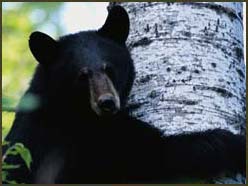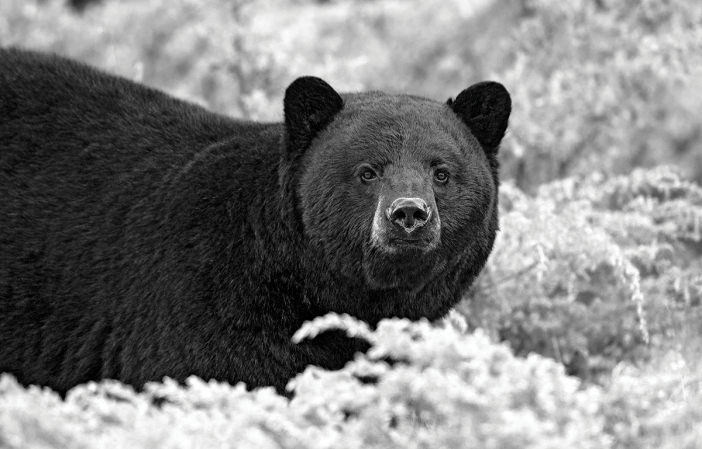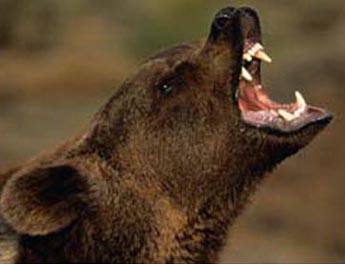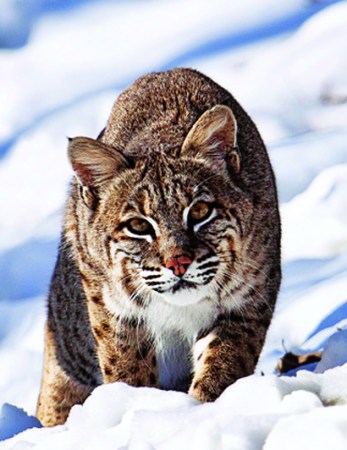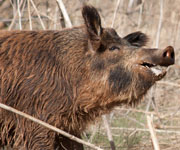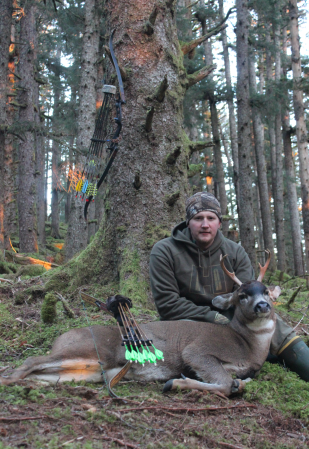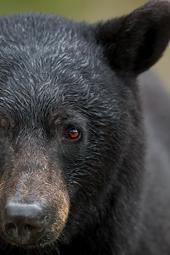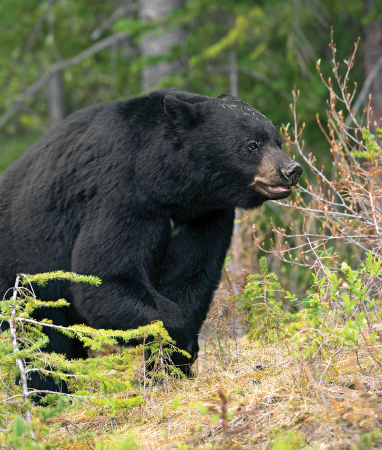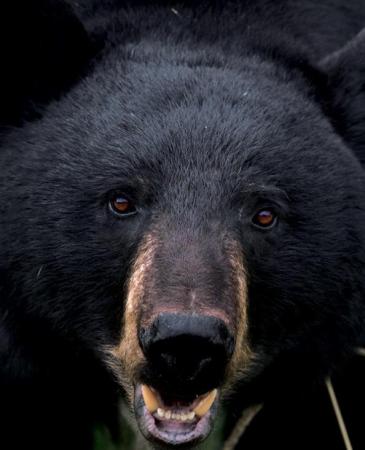The black bear ambled toward me, nosing around in the brush. I was hunting coyotes at the time and had just set up to call when the bear appeared. The season was closed, but I was curious to see how the bear would react to a call. I’d heard that blacks could be called in but had never tried this technique.
The wind was perfect, and I let go with a screeching rabbit-distress call. The bear stopped suddenly and looked my way, its attention riveted in my direction. The animal eased toward me, cautiously picking its way forward. It stopped about 100 yards away and seemed to lose interest, once again nosing about in stumps and brush. I blew the call again, this time with much more intensity. The bear reacted again by dashing straight toward me; then it put on the brakes about 40 yards out, when evidently it spotted me. The bruin quickly ran into the brush, and that was that.
Bear Calling Tips
Bear calling is a technique you hear of occasionally, but never with any consistency. Bears are opportunistic feeders, so it follows that they would respond favorably to the call of a wounded animal, or a prey animal that might offer an easy meal. A bruin’s diet involves practically anything edible, whether it’s plant or animal. But since bears don’t chase small animals as much as foxes, bobcats and coyotes do, I don’t think they’re as likely to respond to a rabbit-distress call as other predators are. When bears do respond, it’s a rare event.
I believe part of the reason bears are not as responsive to calls is that they simply can’t hear them. These animals are scattered about in their environment, so there aren’t many places where they’re concentrated enough to ensure that your call will be heard with any frequency.
Most hunters who successfully call bears do so by first spotting the animal and then moving to a place where the wind will prevent human scent from reaching a bear’s sensitive nose. Of course, the bear must be able to hear the call. Very few bears have been called in “blind.”
**Where Calls Work **
Hunters in the Southwest have been most successful in consistently calling bears. No one can fully explain why, but one popular theory is that because the region is so arid, bears tend to be more concentrated near guzzlers or springs. Calling at such locations may be more productive simply because there are more bears in the area that are close enough to hear your call. This strategy has certainly worked for hunters in Southern California, who have taken some monster bears near water sources on the north (desert) side of the San Bernardino Mountains. Arizona and New Mexico have good black bear numbers and bears here also seem to respond well to jackrabbit calls.
In Predator Caller’s Companion, author Gerry Blair tells of hunters who call in very rough Arizona country with good results. Favored calling areas are rugged canyons with rimrock walls that contain dense thickets of oak, pine and chaparral. Here calls can carry over a long distance. The best time to call is from 3 p.m. until dark.
One hunter claimed to have called in 17 bears in one day, but he was hunting a back-country area with few roads and no hunting pressure. The country was so rough he couldn’t get a horse into it, so he backpacked and camped far from roads.
Foster and Kathy Butt, who run an elk camp in New Mexico, have had numerous black bears respond to cow calls. On one occasion, Kathy was calling for a client in September. Two elk ran in, but from another direction a black bear also came in, and it was headed straight for her. She was using two different cow calls — a Woodswise Hyperhot call and a Wayne Carlton Fightin’ Cow Call.
Foster also called in a sow and two cubs in September while using the Fightin’ Cow Call. He says he was pouring on the volume and the bears were totally focused on the sounds.
Just Do It!
Bears can be called practically any time of year. In July, using a standard diaphragm call, Foster brought in a female and her three cubs, and the bears reacted intently, frothing at the mouth and carrying on. On another occasion, in Alberta, Foster was hunting bears in the spring and spotted a bear in the distance. He used a Hyperhot call, and the bear came charging in.
I think one of the reasons more bears aren’t called is because few people actually try. Predator-calling for coyotes, foxes and bobcats is often done in more open country that doesn’t hold bears. In places where black bears are numerous, other techniques are often used. A classic example is outfitter Ron Alexander’s area in Manitoba, where hunting over baits is the most popular method. I’ve seen more bears in Ron’s area than anywhere else on this continent. Yet Ron, who has personally taken more than 750 bears (most while working as a bear control agent), has tried calling only once. He did it out of curiosity and called in a big bear, though it took him an hour and a half to bring the bruin within range. Alexander believes the animal came strictly out of curiosity as well, and, at least in that instance, patience was the key to success, since many people would have given up when the bear didn’t immediately come in.
Montana outfitter Billy Stockton, who specializes in spot-and-stalk spring bear hunting, likes to see a bear before calling it. In many cases, sighting a bear means spotting one a very long way off and then making a lengthy stalk that could take up to an hour or more. By the time you reach the area where the bear was first spotted, it might be gone from view, but at least you can assume it’s still close enough to hear your call.
Like many callers, Stockton has had his best success calling during the last couple of hours of the day, when bears who have laid up all day in the shade venture out into the cool of the evening.
** Call ‘Em Uphill**
Stockton also believes bears respond more favorably if they have to approach the caller from down-slope rather than from above. For that reason, Stockton calls from a high vantage point, typically blowing a cow call nonstop for 10 minutes or so. In his experience, most bears will come in within 20 minutes, though he recalls once spotting a bear that was at least a mile away. When Stockton started calling, the bear immediately headed in his direction. First it descended a timbered mountain slope, then it walked across a wide valley, then it swam a river and finally it charged toward Stockton with its ears laid back and its jaws popping. It took 40 minutes for the bear to make the journey. Here again, having the ability to reach the bear with the call was critical.
Gary Roberson purchased the Burnham Brothers Call Company many years ago, and since then he and I have done a good bit of calling from Texas to Wyoming. He likes the Black Magic call for bears because it has a deeper squalling sound than the standard cottontail distress call, and it also imitates a deer in distress.
Roberson says that where legal, electronic calls can be extremely effective for bears because they offer more volume and calls are repeated with more frequency and consistency than would otherwise be the case with one person calling occasionally.
Though bears have relatively poor vision, don’t let that lull you into thinking they can’t see you from a distance. Movement will give you away every time, and the lack of sufficient camo also will work to your disadvantage. Bear calling isn’t a foolproof technique, or even one with high odds of success, but I always carry a call with me when I’m hunting bears, just in case. You never know when a curious bear might surprise you and end your hunt on a happy note.
